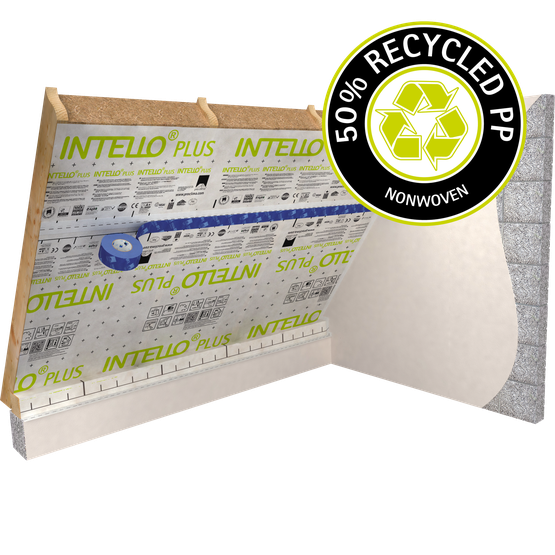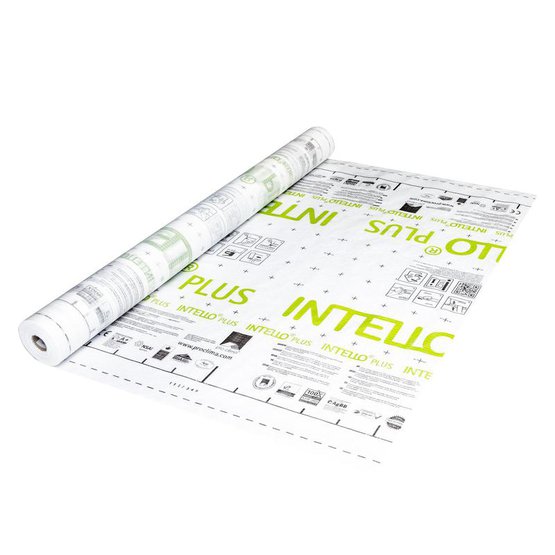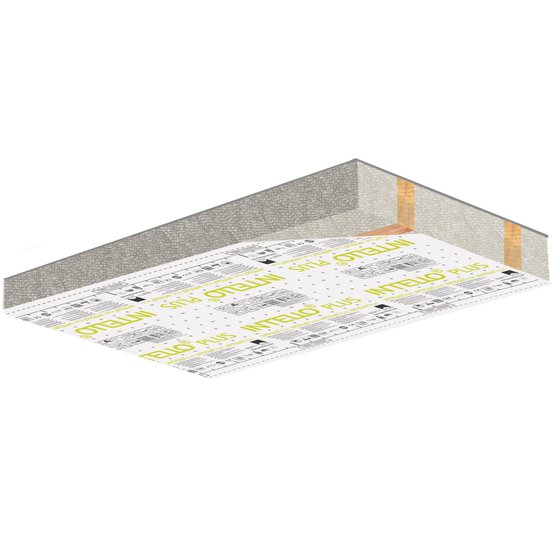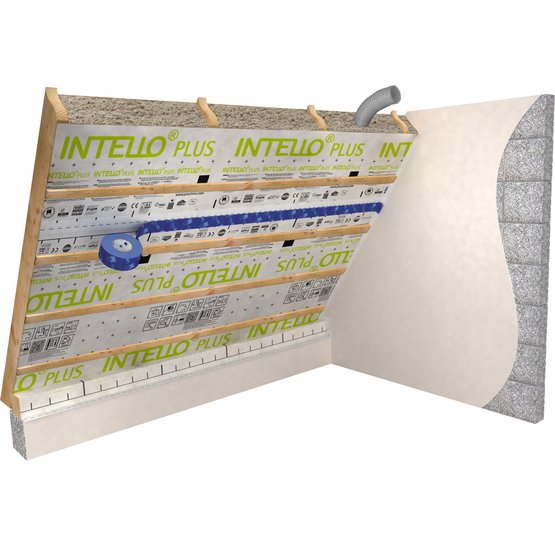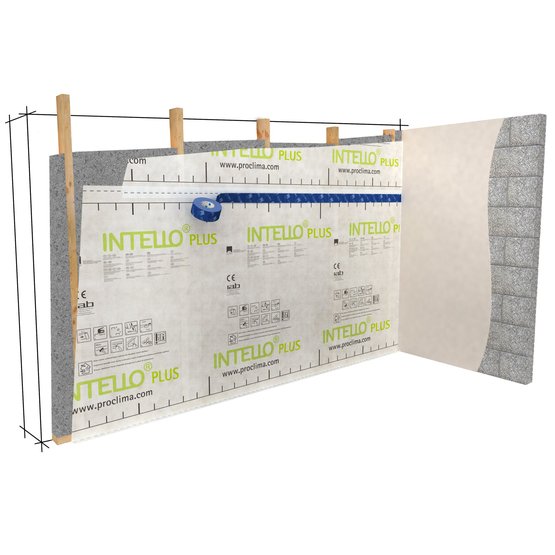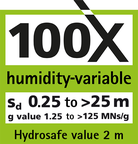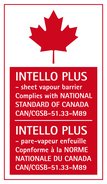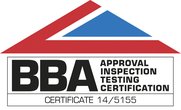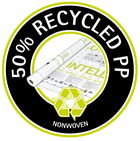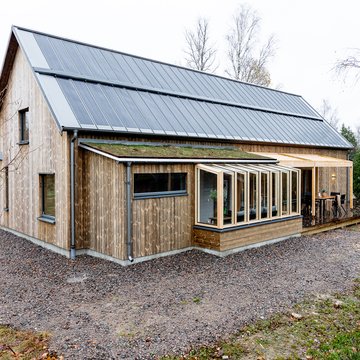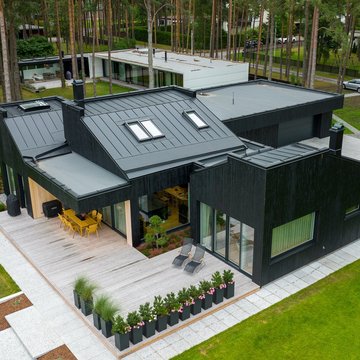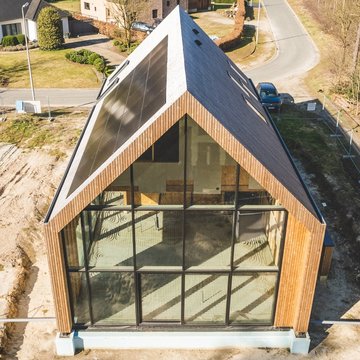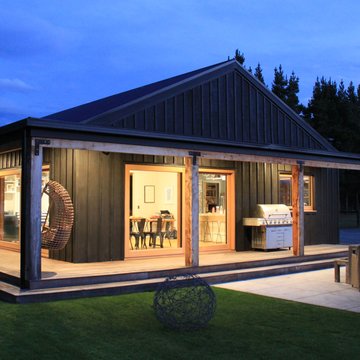Reinforced hydrosafe® high-performance vapour control membrane, suitable for all fibrous insulation materials
Advantages
- Best possible protection against moisture damage to structures and mould because this product is humidity-variable with a variation of a factor of over 100
- Can be combined with all fibrous insulation materials (including blown-in insulation)
- Long-term protection: performance tested and certified by independent testing authority (ETA-18/1146)
- Protected winter building sites thanks to hydrosafe® behaviour
- Test winner in April 2012 with the German product-testing foundation ‘Stiftung Warentest’
- Easy to work with: dimensionally stable, no splitting or tear propagation
- Excellent values in hazardous substance testing, has been tested according to the ISO 16000 evaluation scheme
Areas of application
Vapour control (alternate terms: vapour check or retarder) membrane for use on roofs, walls, ceilings and floors on structures that are open or closed to diffusion on the exterior, e.g. flat/pitched roofs and green roofs, after appropriate design calculations have been carried out.
Installation instructions
Installation video: Insulation between rafters
General conditions
Where possible, INTELLO PLUS should be installed in such a way that adhesion can be carried out using single-sided adhesive tape on the smooth (printed) side of the sheeting. It should be installed taut and without slack either in parallel with or perpendicular to the supporting structure, e.g. the rafters. In the case of horizontal installation (perpendicular to the supporting structure), the separation distance of the supporting structure is limited to a maximum of 100 cm (3’). After installation, perpendicular battens on the inside at a separation distance of a maximum of 50 cm (1’ 8”) must be fitted to carry the weight of the insulation material.
If regular tensile loads on adhesive tape bonds are to be expected – for example, due to the weight of the insulation material – when using mat or panel-shaped insulation materials, an additional supporting batten should be fitted over the overlap sealing. When attaching the membranes in the case of mat or panel-shaped insulation materials, a maximum separation distance of 10 to 15 cm (4” to 6”) applies for the fastening staples, which must be at least 10 mm (⅜”) wide by 8 mm (⁵⁄₁₆”) long. The overlaps between the membrane strips must be approx. 8 to 10 cm (3” to 4”).
Airtight seals can only be achieved on vapour control membranes that have been laid without folds or creases. Ventilate regularly to prevent excessive humidity (e.g. during the construction phase). Occasional, intermittent ventilation is not sufficient to remove large quantities of moisture due to construction work from a building; use a dryer if necessary.
To prevent condensation formation, INTELLO PLUS should be sealed and taped in an airtight manner immediately after the installation of mat or panel-shaped thermal insulation materials. This particularly applies when working in winter.
Additional instructions for blown-in insulation materials
INTELLO PLUS can also be used as a boundary layer for blown-in insulation materials of all types. A reinforcement structure ensures that there is little expansion during the blowing-in process. Installation in parallel with the supporting structure has the advantage that the joint will be on a solid base and is protected by this base.
The separation distance between the staples used to fasten the membrane strips must be a maximum of 5 to 10 cm (2” to 4”). Staples should be oriented parallel with construction timber so that membranes do not tear at the staples when insulation material is being blown in. If installation is carried out perpendicular to the supporting structure, a supporting batten should be fitted directly over the membrane strip overlap with its airtight sealing in order to avoid tensile loading on the adhesive bond.
When working in cold outdoor climates, the blown-in insulation material should be inserted immediately after installation of INTELLO PLUS. This will protect the membrane against condensation formation.
Building projects with INTELLO and INTELLO PLUS
A success story that really rocks!
Although not taken seriously by many when it was first launched, the INTELLO vapour check membrane with humidity-variable diffusion resistance revolutionised construction practice back in the early 2000s. Since then, it has come a long way: an established part of best building practice, the first humidity-variable vapour check membrane with an ETA, certified as fulfilling Passive House standards, and with excellent results in hazardous substance testing. 20 years on from its market launch, it has been fitted on countless projects – ranging from tiny houses right through to multi-storey buildings – on ceilings, roofs and walls to ensure the integrity of the airtightness layer.



